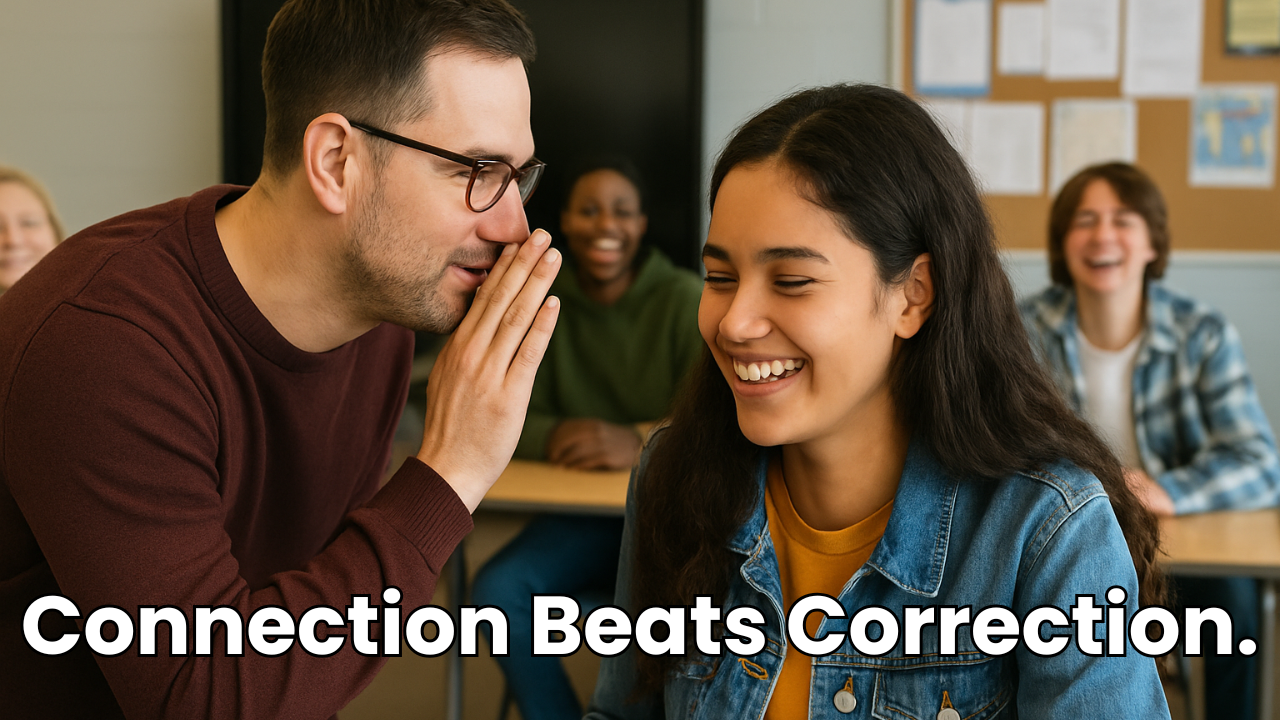
The Key to Writing Fluency in the CI Classroom
Helping students develop advanced writing fluency in a second language often feels like an uphill battle. Many traditional approaches rely on grammar drills, rigid essay structures, and vocabulary lists that rarely translate into authentic communication. The result? Students who hesitate, overanalyze, and struggle to write naturally.
The good news is that writing fluency doesn’t have to be a painful process. With comprehension-based instruction (CI), students absorb language through meaningful input before they attempt output. Writing becomes an extension of what they understand, allowing them to produce complex, natural language without feeling overwhelmed by rules.
By guiding students through free-writing exercises, collaborative writing experiences, and structured prompts that encourage complexity, teachers can help them gain confidence and proficiency. This article explores simple, effective strategies that will transform student writing while making the process more enjoyable for both learners and educators.
Free-Writing That Builds Fluency Without Fear
For many students, the hardest part of writing is simply getting started. The fear of making mistakes can be paralyzing, leading to hesitation and self-doubt. Free-writing eliminates this fear by shifting the focus from accuracy to fluency.
A simple yet effective strategy is timed free-writing. Set a timer for five to ten minutes and encourage students to write continuously about a given topic. They shouldn’t stop to correct errors or worry about perfect grammar—just let the words flow. Even if they don’t know how to express something, they can describe it in another way or use circumlocution to work around gaps in vocabulary.
Using engaging visual prompts, such as thought-provoking images or short videos, can provide inspiration and help students bypass decision paralysis. After writing, students can review their work and highlight words or phrases they’d like to improve, allowing for self-reflection without judgment.
This approach fosters confidence, increases writing stamina, and helps students internalize grammatical structures in a low-pressure setting. Over time, their ability to express ideas naturally and fluidly will improve.
Collaborative Writing for Natural Language Acquisition
Writing doesn’t have to be a solitary activity. Collaborative writing exercises provide an opportunity for students to build on each other’s ideas, reinforcing correct grammar structures in an engaging way.
One effective strategy is the Write & Pass activity. Each student starts by writing a sentence or two, then passes their paper to a classmate, who continues the story. This exercise encourages spontaneity and creativity while helping students reinforce their understanding of narrative flow and sentence construction.
Another powerful technique is interactive class storytelling. In this activity, the teacher acts as a scribe while students contribute ideas for a shared story. As students suggest sentences, the teacher writes them down, modeling proper structures and occasionally rephrasing to enhance fluency. Seeing their words transformed into grammatically correct sentences in real-time helps students internalize patterns naturally.
Peer review sessions also offer valuable opportunities for collaborative learning. Instead of focusing on error correction, students should be encouraged to discuss meaning first. Does the story make sense? Are the ideas clear? By prioritizing communication over grammar perfection, students develop a mindset that values fluency and expression.
Structured Prompts That Encourage Complexity
Once students are comfortable with fluency-focused writing, structured prompts can help them refine their skills and introduce more complexity. Rather than simply asking students to write about broad topics, scaffolding their responses with step-by-step prompts leads to more sophisticated language use.
One effective technique is sentence expansion. Students begin with a simple sentence, then gradually add details. For example, a sentence like “I went to the park.” evolves into “Yesterday afternoon, I went to the park with my friends to play soccer.” This practice pushes students to incorporate descriptive elements, transitions, and varied sentence structures.
Another approach is progressive storytelling, where students begin with a simple narrative and revise it to include more advanced grammatical features. For instance, after writing a short anecdote in the present tense, they might rewrite it in the past or future, reinforcing different verb forms in a meaningful way.
By giving students structured opportunities to refine their writing, they become more comfortable using complex language while maintaining fluency.
Using Authentic Models to Encourage Natural Grammar Use
One of the best ways to help students develop authentic writing skills is by exposing them to real-world examples. Instead of relying on textbook sentences, students should engage with authentic texts—short stories, tweets, blog posts, or even transcripts of native conversations.
Analyzing these texts helps students recognize natural phrasing, transitions, and grammatical structures. A great way to reinforce this is through imitation exercises. Students can take a passage from an authentic source and rewrite it using their own experiences while maintaining the original sentence structure.
Another effective method is sentence builders, where students manipulate pre-written sentence fragments to form complex, grammatically sound ideas. This allows them to experiment with sentence variety while reinforcing correct patterns in a guided way.
The more exposure students have to authentic language, the more naturally they’ll integrate advanced structures into their writing.
Feedback Strategies That Boost Confidence and Accuracy
Effective feedback is key to helping students refine their writing, but it should be delivered in a way that builds confidence rather than discouraging risk-taking. Instead of overwhelming students with red marks, targeted feedback strategies can help them improve without fear of making mistakes.
One powerful method is Two Stars and a Wish. When reviewing a student’s writing, the teacher provides two positive highlights and one area for improvement. This keeps the focus on growth rather than errors, making feedback feel constructive rather than punitive.
Meaning-first feedback is another essential approach. Rather than immediately correcting grammar, ask students, “Does this make sense?” Encouraging them to focus on clarity and communication first reinforces the idea that writing is about expressing meaning rather than achieving grammatical perfection.
Selective correction is another useful strategy. Instead of marking every mistake, focus on one or two key areas per piece of writing. For example, if a student is struggling with verb tense consistency, provide feedback specifically on that element. This allows students to improve incrementally without feeling overwhelmed.
By implementing thoughtful, supportive feedback strategies, teachers can help students refine their writing skills while maintaining confidence and motivation.
Conclusion: Writing Fluency is Closer Than You Think
Developing advanced writing fluency doesn’t require tedious grammar drills or endless corrections. When students are given opportunities to write freely, collaborate with peers, engage with structured prompts, and analyze authentic language, their proficiency grows naturally.
By shifting the focus from perfection to fluency, teachers create an environment where students feel confident experimenting with language. Writing becomes a process of exploration rather than an exercise in avoiding mistakes.
If you want to assess how well your CI approach supports student proficiency, take the CI Proficiency Quiz at https://imim.us/ciquiz. This quick assessment will help you refine your strategies and ensure your students are on the right path toward fluency!
Key Takeaways
- Free-writing eliminates fear and builds fluency by focusing on continuous writing rather than perfection.
- Collaborative writing reinforces natural grammar acquisition through shared storytelling and peer review.
- Structured prompts scaffold complexity, guiding students toward more sophisticated expression.
- Authentic models help students internalize advanced grammar and natural phrasing.
- Effective feedback should prioritize meaning and confidence-building over excessive corrections.



